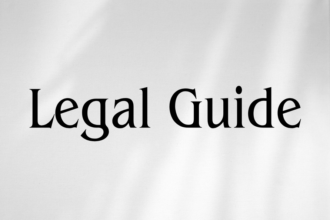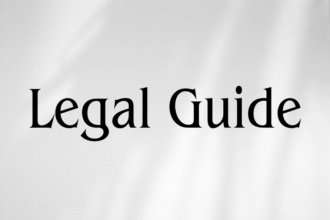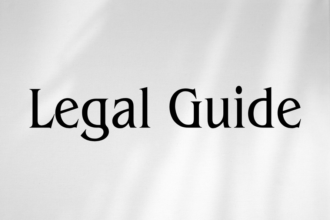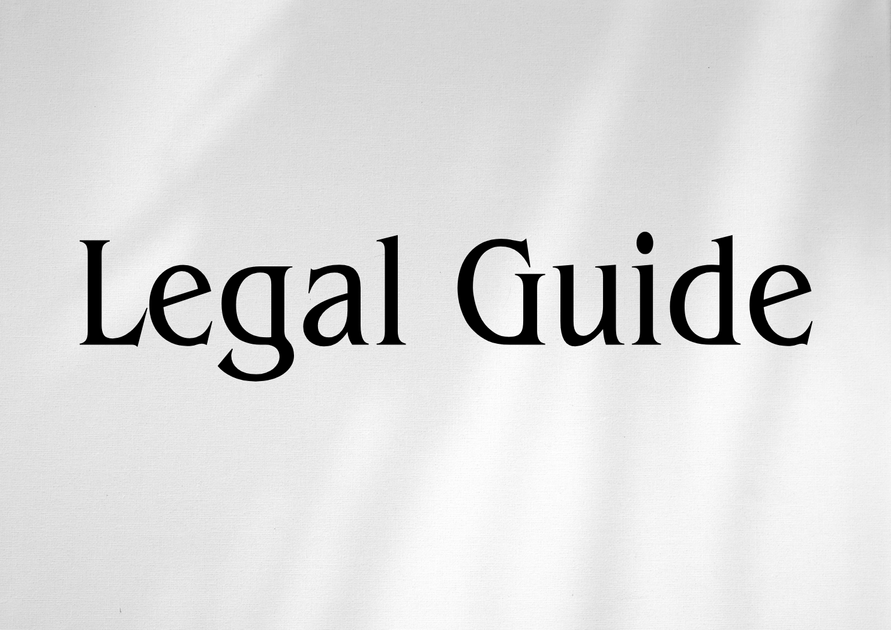Introduction: Navigating Carrier Liability under UAE Air Legislation in 2025
The United Arab Emirates continues to cement itself as a major global hub for air cargo, leveraging its strategic geography, modern infrastructure, and pro-business regulations. As trade volumes and logistics complexities increase, the legal regime surrounding air carrier liability for cargo damage is of critical importance for airlines, freight forwarders, shippers, consignees, and legal professionals alike. With recent updates under Federal Decree Law No. (8) of 2023 on Regulating Civil Aviation (“UAE Civil Aviation Law 2023”), effective from 2024, and anticipated regulatory refinements through 2025, it is crucial for stakeholders to understand the contours of legal responsibility, risk management, and compliance strategies in the air cargo sector.
This comprehensive guide will analyze the legislative framework governing air carrier liability for cargo damage, examine key compliance considerations in light of the new law, draw comparisons with the previous legal landscape, explore case studies, and provide actionable recommendations for UAE-based businesses. Whether you are a logistics manager, in-house counsel, or executive overseeing supply chains, this expert analysis will equip you with the insights necessary to navigate an evolving legal environment while protecting your organization’s interests.
Table of Contents
- Legal Framework: UAE Air Law and International Influence
- Key Provisions on Carrier Liability
- Comparative Overview: Previous and Updated Laws
- Scope, Limits, and Exceptions to Liability
- Practical Considerations for UAE Businesses
- Risks of Non-Compliance and Mitigation Strategies
- Case Studies: Real-World Impacts in UAE Jurisdiction
- Conclusion: Looking Ahead at Compliance and Best Practices
Legal Framework: UAE Air Law and International Influence
The Foundation in Federal Decree Law No. (8) of 2023
The primary statutory basis for carrier liability in air cargo operations is found in Federal Decree Law No. (8) of 2023 on Regulating Civil Aviation (the “2023 Civil Aviation Law”). This law repeals its predecessor, Federal Law No. (20) of 1991, and comprehensively modernizes the regulation of civil aviation, aligning more closely with international legal principles—particularly the Montreal Convention of 1999, to which the UAE is a signatory since 2004.
The law covers essential aspects such as the definition of carriage of cargo, rights and duties of carriers, compensation limits, documentation requirements, applicable jurisdiction, and dispute resolution processes. In parallel, UAE Cabinet Resolutions and Ministry of Justice guidelines supplement the framework, addressing specialized issues such as dangerous goods and cargo security protocols.
International Instruments: The Montreal and Warsaw Conventions
The UAE’s adherence to the Montreal Convention 1999, and, by historical extension, provisions of the Warsaw Convention 1929, ensures that the liability regime applied in the Emirates is largely consistent with global aviation standards. This alignment is particularly significant for foreign carriers, freight forwarders operating international routes, and UAE businesses involved in cross-border transactions. The conventions harmonize carrier responsibilities and compensation structures, and provide clarity regarding documentation and jurisdiction.
Key Provisions on Carrier Liability
Defining the Obligation: Carriers’ Duty of Care
Under Article 144 et seq. of UAE Civil Aviation Law 2023, air carriers are strictly liable for loss, damage, or delay of cargo occurring during carriage by air, except where certain limited defenses apply. The starting point is the carrier’s duty to ensure the safe handling, transport, delivery, and storage of cargo from the point of taking charge to delivery at the agreed destination.
Key elements include:
- Period of Liability: The law defines clear temporal limits to liability, focusing on the time when cargo is under the carrier’s charge and excluding pre- and post-cargo handling by third parties, unless otherwise contractually stipulated.
- Types of Damage Covered: Loss, physical damage, and certain types of consequential delay are included, provided it can be demonstrated that these arose while the cargo was in the carrier’s care.
- Standard of Proof: The burden initially rests on the claimant to demonstrate the occurrence and quantifiable extent of loss or damage. The carrier then may seek to prove applicable defenses recognized by statute.
Compensation Limits and Calculation
The 2023 law, in line with the Montreal Convention, provides for capped compensation (SDR 19 per kilogram, with SDR rates published by the International Monetary Fund) unless the consignor declares a higher value and pays a supplementary fee. UAE law permits parties to agree upon higher limits through contractual arrangements, provided they do not contravene public interest or established regulatory standards.
For illustration:
| Provision | UAE Law 2023 (Art. 146) | Montreal Convention Reference |
|---|---|---|
| Compensation Limit | 19 SDR/kg | Art. 22 Montreal Convention |
| Declaration of Value | Permissible, subject to surcharge | Art. 22(2) Montreal Convention |
Exclusions and Defenses
Article 148 outlines specific circumstances in which the carrier may be exonerated wholly or partially from liability, including (but not limited to):
- Damage attributable to inherent defect, quality, or vice of the cargo
- Improper packaging by a party other than the carrier
- Acts of war, security threats, or force majeure events beyond reasonable control
- Contributory negligence by the consignor or consignee
Comparative Overview: Previous and Updated Laws
To facilitate comprehension, the following table delineates the principal differences between the now-repealed Federal Law No. (20) of 1991 and the revised 2023 framework, particularly in the context of liability for cargo damage:
| Aspect | Federal Law No. (20) of 1991 | Federal Decree Law No. (8) of 2023 |
|---|---|---|
| Liability Basis | Quasi-contractual, opt-out permitted | Strict liability, in line with Montreal Convention |
| Limitation Period | 2 years | 2 years (clarified trigger date in 2023 update) |
| Compensation Limit | Per local law, often lower | 19 SDR/kg; matches international standard |
| Defenses/Exemptions | Narrower scope | Expanded and explicitly referenced |
| Documentation | AWB required | Electronic records permitted, with e-AWB recognition |
| Jurisdictional Provisions | UAE-focused | Explicit international jurisdiction options |
Visual Suggestion
Compliance Checklist Chart: Create a side-bar checklist highlighting key requirements for air carriers under the new law (insurance, documentation, notification timelines, etc.), to assist compliance teams.
Scope, Limits, and Exceptions to Liability
When Does Carrier Liability Attach?
Carrier liability commences from the moment the cargo is delivered into the carrier’s custody and ends upon delivery to the recipient. This period excludes transit stages outside direct carrier control unless a separate contractual arrangement extends liability. It is vital for businesses to clearly identify this period within their transportation contracts to avoid coverage gaps.
Contractual Modifications and Non-Waiver Rules
While parties may negotiate higher liability limits (through a declared value for carriage), Article 150 expressly prohibits contractual provisions that wholly exonerate the carrier from liability or that reduce statutory entitlements below the mandatory minimum. Any such attempt is considered void under the law and could expose carriers to regulatory sanctions.
Notification Requirements for Claims
A unique local consideration is the statutory requirement for the consignee to notify the carrier in writing of any damage or shortfall immediately upon discovery, and no later than 14 days after receipt of the cargo. Failure to provide timely notice may extinguish the right to claim unless fraud or gross negligence is established. This notification regime underscores the importance of robust cargo inspection and inventory protocols at the time of delivery.
Illustrative Flow Diagram
Suggested Visual: A process flowchart that outlines the typical cargo damage claim process – from discovery through carrier notification, inspection, negotiation, and potential litigation – highlighting statutory time limits and critical compliance checkpoints.
Practical Considerations for UAE Businesses
Contract Drafting and Risk Allocation
Legal counsel and logistics managers must review and update standard form contracts and air waybills (AWB) to reflect the latest statutory provisions. Key contract considerations include:
- Ensuring all contracts reference the 2023 Civil Aviation Law and, where applicable, the Montreal Convention.
- Clear definition of the cargo handling and transfer period, with explicit documentation of delivery and acceptance.
- Provisions addressing insurance, including consignment value declarations and required notifications for exceptions and claims.
- Inclusion of mandatory notifications, time limits, and jurisdictional clauses for cross-border shipments in accordance with Article 157 of the law.
Interaction with Local UAE Regulations
It is also necessary to ensure compliance with local UAE regulations, including those issued by:
- The General Civil Aviation Authority (GCAA) – for operational licensing and dangerous goods guidelines
- UAE Ministry of Justice – for case law and dispute resolution practices
Insurance and Risk Transfer
Due to the statutory limits on the carrier’s liability, businesses are strongly advised to arrange cargo insurance covering the full replacement value, especially for high-value or sensitive shipments. Insurance policies should be reviewed in conjunction with logistics agreements to avoid subrogation complications and policy coverage misunderstandings.
Compliance Checklist for Companies
| Compliance Item | Key Action | Responsible Party |
|---|---|---|
| Contract Review | Update AWBs and service agreements for legal references | Legal/Contracts team |
| Claims Management | Train staff on notification deadlines/timeframes | Operations & Reception |
| Insurance Coverage | Review and adjust policy limits vs. risk profile | Risk/Insurance team |
| Vendor Due Diligence | Verify carrier GCAA compliance and licensing | Procurement |
Risks of Non-Compliance and Mitigation Strategies
Legal and Financial Repercussions
Non-compliance with carrier liability provisions exposes organizations to significant financial penalties, legal costs, reputational damage, and potential loss of regulatory licenses. For carriers, failure to adhere to strict liability or notification requirements could result in indemnity claims that far exceed the statutory limit, loss of right to rely on defenses, adverse court judgments, and Ministry of Justice sanctions.
Recommended Compliance Strategies
- Staff Training and Awareness: Regularly train managerial and operational employees on the statutory requirements, especially with regard to time limits and documentation protocols.
- Digital Documentation: Adopt electronic AWBs, shipment tracking, and claims management systems to preserve evidentiary records and facilitate expedited compliance checks.
- Legal Audits: Schedule periodic review of transport and insurance contracts with experienced UAE legal consultants to ensure ongoing alignment with evolving laws and conventions.
- Vendor Management: Vet carriers and logistics partners for GCAA approval, financial stability, and demonstrated compliance with UAE and international safety standards.
Case Studies: Real-World Impacts in UAE Jurisdiction
Case Study 1: High-Value Electronics Shipment
Facts: A Dubai electronics distributor contracts an international air carrier to ship 5 tons of smartphones from China to Jebel Ali. Upon delivery, the consignee notices water damage affecting 30% of the cargo. Notification is submitted on the tenth day following delivery.
Legal Analysis: The carrier accepts liability under UAE Civil Aviation Law 2023, Article 144, but invokes the SDR cap. The distributor attempts to claim for full retail value; however, absent a declared value in the AWB and in view of timely notification, compensation is restricted to 19 SDR/kg. No evidence of force majeure or inherent defect is found; the timely notification preserves the right to claim.
Outcome: The carrier compensates in accordance with the SDR limit, highlighting the importance for shippers to declare a higher value for vulnerable or high-value goods and ensure insurance cover aligns with actual risks.
Case Study 2: Jurisdiction and Notification Lapse
Facts: A UAE-based flower wholesaler receives a shipment delayed due to customs clearance. Flowers are found wilted upon receipt, but notification to the carrier occurs after 20 days. The consignee seeks damages in UAE courts.
Legal Analysis: The delayed notification undermines the consignee’s claim under Article 152, which mandates a 14-day window. Absent compelling evidence of carrier fraud or gross misconduct, the claim is dismissed. Additionally, the parties’ contract included an exclusive jurisdiction clause referencing UAE courts, which further streamlined local dispute resolution.
Outcome: The case underscores the criticality of observing statutory deadlines and of incorporating jurisdictional clauses for legal certainty.
Conclusion: Looking Ahead at Compliance and Best Practices
The UAE’s updated Civil Aviation Law brings welcome clarity and modernization to the regime governing air carrier liability for cargo damage, closely integrating international best practices with local regulatory strengths. By adopting the Montreal Convention’s standards and enhancing statutory defenses, the new framework delivers greater legal certainty and risk allocation for carriers, shippers, and freight forwarders.
Businesses operating or transacting air cargo in the UAE must ensure robust compliance programs, update contracts and operational protocols, and invest in staff training and digital recordkeeping. Proactive engagement with licensed carriers, timely notification of damage, and adequate insurance will remain essential risk mitigation tools. As regulatory oversight continues to evolve post-2025 and new Cabinet Resolutions are issued, organizations are strongly advised to remain vigilant, seek periodic legal consultation, and leverage technology for compliance management.
Ultimately, the new legislative landscape does not merely create additional duties, but also opportunities for enhanced trust, efficiency, and competitiveness in the UAE’s rapidly expanding air cargo market.




